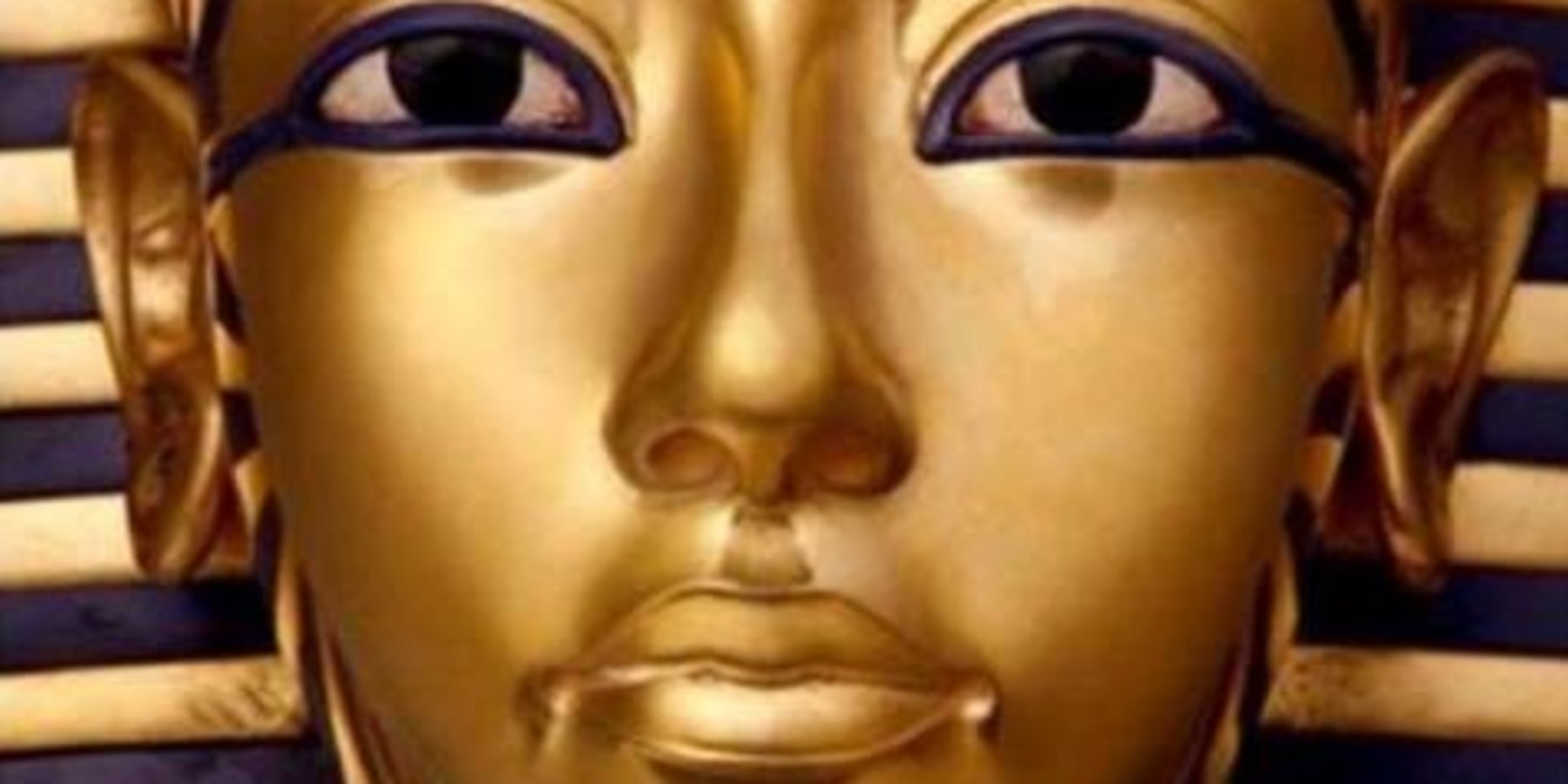
A little bit about the mask and King Tut story
Golden Mask of King Tutankhamun 1323 BC gold inlaid with glass and semiprecious stones 54cm high Egyptian Museum, Cairo
The discovery by Howard Carter in 1922 of the almost undisturbed tomb of Tutankhamun (who died around 1325 BC) revealed the riches of the New Kingdom royal burials in the Valley of the Kings. Yet Tutankhamun was a young and obscure pharaoh. His fabulous treasures can only hint at those looted from the tombs of great kings like Ramesses II.
The pharaohs of New Kingdom Egypt were buried in the Valley of the Kings with precious objects needed to maintain their status in the divine afterlife. Although the bodies and riches were thought to be safe because the remote site could be easily guarded, it seems that the builders and even the guardians of the tombs could not always be trusted. Most of the sacred resting places were soon plundered.
Tut became a boy king at the age of nine. He married Ankhesenpaaten, one of the six daughters of his father and Nefertiti. She was slightly older then Tutankhamen and possibly Tut’s stepsister. At this time Tutankhamen was still known as Tutankhaten, because both he and Ankhesenpaaten lived in the age of Aten, or the age of the Solar Globe. This is known as the most pleasant epoch in Egypt’s past (Noblecourt 78, 215,241). His father and Queen Nefartiti also lived in this period of time(Golden 78). When Tutankhamen became pharaoh, the first thing he had do was to take over the shrines of Amen, but before this could be done the temple had to be renewed(Noblecourt 15, 16). Tut journeyed to Memphis and Thebes and restored the faith in the old gods. He reinstated Amen, and as this was done Tut’s name was changed from Tutankhaten to Tutankhamen(Golden, 78). Ankhesenpaaten name also changed to end in amen. It was changed to Ankesenamun. Their names remained like this the whole time that Tut reigned in Egypt(Noblecourt, 214).
King Tutankhamen, also known as King Tut was the most famous Egyptian pharaoh. He laid at rest for 3,300 years in the Valley of the Kings. Tutankhamen’s name has always remained a mystery partially due to the fact that it is derived from hieroglyphs. Today, his name is spelled many different ways. This is due to the fact that Egyptians did not use vowels and the translation can not be exact. In various amounts of books and research sources, Tut’s name is spelled either Tutankhamen, Tutankhamun or Tutankhamon depending on the author. Either of these ways his name translates as, "Living Image of Amun" (Rigby 1).
Soon after this, King Tut was believed to have died around the age of eighteen. No one can be sure of the cause of his death. He was a frail child and he could have died because of natural causes, or been murdered or died in an accident. He could have just fallen off a chariot(W.W. Lewis, video). After his death, Ay supposedly succeeded. Tutankhamen had no male, children survivors so Ay, Ankensenamen’s grandfather, perhaps married her, so that Amen could stay under control (King Tut-Ankh-Amun, 1).
Tut was buried in the Valley of the Kings, along with thirty other pharaohs. His tomb was hidden beneath Ramses the 6th in a hidden passageway. Archaeologists looked many years to find his tomb. Everyone knew it was full of treasures, artifacts and jewels, art, gold and ransom, and therefore, everyone was in search for it(Johnson video).
Finally a British Egyptologist by the name of Howard Carter discovered the tomb in November of 1922. He went on a search of it on behalf of his patron, Lord Carnarvon(Carter, 83). He went on search with his two assistants, both which died. This is what is known of the beginnings of "King Tut’s Curse". There was a report that there was an inscription on the tomb that read, "Death shall come to him who touches the tomb." Archaeologists and tourists often became ill or died after visiting the site. Combining the deaths and inscriptions, a so-called curse developed, that many visitors believed to be true. In 1980, a security officer announced that the curse had been made up to frighten away grave robbers. The curse was developed to protect the tomb. Carters’ assistants could have possibly died because of bacterium of fungus formation. All the tourists and archaeologists associated with the tomb led normal life spans. The other visitors to the site and archaeologists must have died because they were very old, or because they were ill from the start. In no way was it because of the so called curse(Nickell 16-19).

